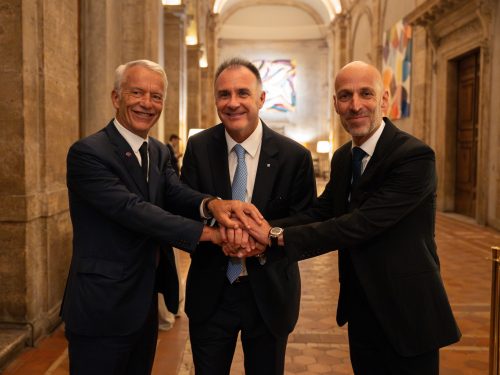News
Share on
"If youth unemployment is falling, many young people on the fringes are recovering, some talent is starting to arrive from abroad, perhaps we have realised that when training and the world of work talk to each other, results start to come. And this also happens thanks to the contribution of quality Its Academies, where the teaching is innovative, workshop-based and co-designed with companies, with a solid public-private axis'. Thus Riccardo Di Stefano, President of the Young Entrepreneurs of Confindustria and delegate of the President for Education and Open Innovation in an interview with Sole24Ore. "This is why the Its Academy must be widely publicised in schools and among students and families. And we must have a vision beyond the NRP, which must also include adequate and certain resources and rigorous monitoring'.
Di Stefano, will be at the graduation ceremony today of ITS Mechatronics of LazioA truly beautiful reality. Since it started in 2019, the Its Mechatronics of Lazio has graduated 112 young people, recording a employment rate of practically 100%. And today, out of the Foundation's 97 members, as many as 68 are companies, doubling the number in 2022. This testifies to the quantity and quality of the work done by Maurizio Stirpe, and which now continues with the new president, Miriam Diurni, in close contact with schools and the territory. After all, Confindustria has always supported him, Higher Technological Institutes are a resource for young people, companies and the country as a whole: 87% of new graduates (national average figure, source: Indire, ed.) have a job, which is also consistent with the training course undertaken in the two-year course, and enter the world of work through the front door, at the age of 21-22. Now, thanks to the drive of Minister Giuseppe Valditara, in 172 institutes the testing of the 4+2 model, i.e. four years of high school plus two years in the Its Academy, which we wholeheartedly support. Because we have to say it clearly: technical and technological education is cutting-edge and of absolute excellence'.
For Di Stefano we are therefore on the right track: 'The youth unemployment rate has fallen to just over 20%, and the number of Neet, young people who do not study and do not work, is also falling. In July, employment among 15 to 24 year olds increased and there are fewer inactive people. We are still not among the top of the class internationally, but it is a sign. Having re-established the school-work dialogue was the right choice. And it is precisely the topics of training, well connected to work, skills and innovation that will be the focus of our conference of young entrepreneurs in Capri, scheduled for 11 and 12 October'.
What is needed is the 'strong presence of companies that accompany the growth of young people, stimulate their ambitions and help them realise them. Every year we need 47 thousand Its Academy graduates, but the system only manages to train 7 thousand of them. A very high mismatch that costs us 43.9 billion in terms of lost added value, a figure corresponding to almost 2.5% of Italian GDP. Here, action is needed. An intelligent communication campaign is urgently needed, there is no more time to lose. The demographic crisis, of course, does not help. But we must exploit all possible channels, including the Mattei plan, with the entry, in legality, of young foreigners trained according to Italian standards and needs'.
Then there is the Its reform, and managing the post-NRP: 'Confindustria worked hard to get additional resources to the Its Academy, and 1.5 billion came in. But after the NRP there must be a congruent value of resources for the Its system: Today there are 48 million national funds, at least 300 million are needed. And Indire's close and rigorous monitoring will be even more necessary which I hope can also be extended to the experimentation of the professional-technological training chain, which is inspired precisely by the Its Academy. Our guiding star must be young people, not the proliferation of foundations. In fact, to justify this investment we must take our cue from those who have behaved efficiently and constructively, working for young people and the overall growth of businesses and the territory. In other words, we must look at quality, and we must ensure that the Its Academies consolidate their own identity. Only in this way will we convince many young people to choose this pathway'.


















